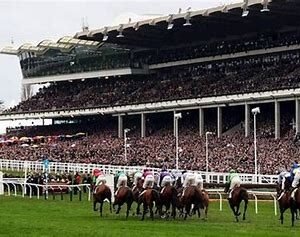0, a concept already familiar in other sports like baseball and American football, is sparking debate and discussion within the cricketing world.
This article delves into the potential benefits and drawbacks of roofed cricket stadiums, exploring their impact on the game, fans, and the sport’s future.
Why Roofs? The Advantages
Proponents of roofed stadiums highlight several advantages that could revolutionize cricket:
Weatherproofing the Game: Rain delays and cancellations are a major frustration for fans, players, and broadcasters. A roof eliminates this concern, ensuring matches can be played uninterrupted, leading to more predictable schedules and a more reliable viewing experience. This is particularly crucial for high-profile tournaments and finals, where bad weather can disrupt the momentum and excitement.
Extending the Season: Roofed stadiums allow for cricket to be played year-round, regardless of the climate. This opens up possibilities for extended seasons, additional tournaments, and the potential for attracting new fans in regions where traditional outdoor cricket is limited by weather conditions.
Improved Playing Conditions: A controlled environment offers a more consistent playing surface. Factors like dew, which can significantly impact swing bowling, become less of a variable. Additionally, roofed stadiums can be designed to optimize light and minimize glare, creating ideal conditions for both players and spectators.
Enhanced Fan Experience: Roofs provide shelter from the elements, allowing fans to enjoy matches in comfort regardless of the weather. Additionally, advanced climate control systems can maintain a pleasant temperature, making the experience more enjoyable, particularly in hot or humid climates.
Multi-Purpose Functionality: A roofed stadium can be used for various events besides cricket, such as concerts, exhibitions, and other sporting activities. This versatility increases revenue streams and maximizes the stadium’s utilization.
Challenges and Considerations
While the advantages are enticing, there are also challenges associated with roofed cricket stadiums:
Cost: Building and maintaining a roofed stadium is a significant financial undertaking. The cost can be prohibitive for many cricket boards and may lead to higher ticket prices, potentially alienating some fans.
Impact on Traditional Format: The absence of natural elements like wind and dew could alter the traditional balance between bat and ball. This might necessitate adjustments to the rules or playing conditions to maintain the spirit of the game.
Loss of Open-Air Ambience: The classic atmosphere of a sun-drenched cricket match, with the roar of the crowd echoing through an open stadium, is cherished by many fans. A roofed environment might feel sterile in comparison, potentially detracting from the sport’s unique charm.
Lighting and Ventilation: Maintaining a well-lit and well-ventilated environment under a roof is crucial. Improper design can lead to shadows on the pitch, affecting player visibility and potentially impacting the fairness of the game.
Limited Exposure to Different Conditions: Young players might be less exposed to varying weather conditions if matches are primarily played under roofs. This could hinder their ability to adapt to different playing surfaces and environments.
The Global Landscape: A Glimpse into the Present
Currently, only a handful of stadiums around the world have retractable roofs that can be used for cricket. The Melbourne Cricket Ground (MCG) in Australia boasts a unique retractable dome, offering complete weather protection.
However, it’s a multi-purpose stadium primarily used for other sports like Australian Rules Football. The limited presence of dedicated roofed cricket stadiums highlights the ongoing debate and the cautious approach many cricketing nations are taking.
Looking Forward: A Balanced Approach
The introduction of roofed stadiums in cricket is a complex issue with no easy answers. While the potential benefits are undeniable, the challenges cannot be ignored.
A balanced approach might be the key:
Strategic Implementation: Roofed stadiums could be prioritized for major tournaments and finals, ensuring weather disruptions don’t mar high-profile events. Traditional open-air stadiums can continue to be used for regular season matches.
Technological Advancements: Continued advancements in roof design and technology can help mitigate issues like lighting and ventilation, ensuring a fair and enjoyable experience for both players and fans.
Preserving Tradition: Respecting the spirit and traditions of cricket is crucial. Rules and playing conditions might need to be carefully considered to maintain the balance between bat and ball in a roofed environment.
FAQs
What is a roofed cricket stadium?
A roofed cricket stadium is a sporting venue specifically designed for cricket matches, featuring a retractable or fixed roof that covers the playing field and spectator areas.
What are the main benefits of roofed cricket stadiums?
Eliminates rain delays and cancellations, ensuring uninterrupted matches.
Extends the playing season, allowing for year-round cricket in some regions.
Offers a controlled playing environment with consistent pitch conditions.
Enhances the fan experience with protection from extreme weather and climate control.
Provides multi-purpose functionality for hosting various events beyond cricket.
What are the potential drawbacks of roofed cricket stadiums?
High construction and maintenance costs.
Possible alteration of traditional game balance due to absence of natural elements.
Loss of the open-air atmosphere that some fans cherish.
Challenges in maintaining good lighting and ventilation under the roof.
Limited exposure to different weather conditions for young players.
What types of roofs are used in cricket stadiums?
There are two main types:
Retractable Roofs: These roofs can be opened or closed depending on weather conditions, offering flexibility and open-air options when desired.
Fixed Roofs: These roofs permanently cover the stadium, providing complete weather protection but eliminating the open-air experience.
How does a roof impact the playing conditions?
Absence of wind and dew can alter swing bowling and other aspects traditionally influenced by natural elements. Adjustments to playing conditions or rules might be necessary.
What can be done to address lighting and ventilation concerns?
Advanced roof design with translucent materials and efficient ventilation systems can ensure a well-lit and well-ventilated environment under the roof.
Who typically bears the cost of building a roofed stadium?
Cricket boards, government bodies, or private investors can finance the construction, depending on the ownership structure of the stadium.
How can the cost of roofed stadiums be justified?
Increased revenue streams from year-round matches, multi-purpose use, and potentially higher ticket prices can help offset the construction costs.
The decision to embrace roofed stadiums in cricket is not one to be taken lightly. Careful consideration of the potential advantages and drawbacks is essential. Ultimately, the goal should be to enhance the sport while preserving its unique character and traditions.
To read more, Click here





